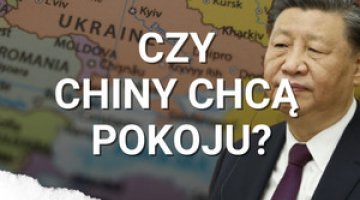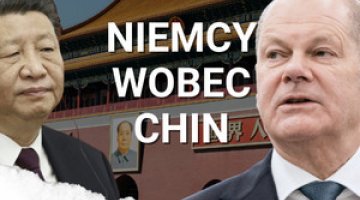Russia-China: ritual demonstrations against the West?
Cooperation: Ewa Fischer
The Chinese leader Xi Jinping visited Moscow on 8-9 May. During the Russian-Chinese summit over 30 agreements (mainly economic) were signed. The Chinese leader also took part in the celebrations organised in Moscow to commemorate the 70th anniversary of the end of World War II.
Contrary to the official narrative from the Russian side, the agreements do not constitute a breakthrough in bilateral relations (they were mainly framework agreements and memoranda). The frequency and setting of the Russian-Chinese summits, and the number of documents, the signing of which usually accompanies such gatherings, have become a diplomatic ritual Moscow uses to strengthen its narrative of the increasingly strategic nature of its relations with Beijing. The general character of the economic agreements signed shows that China is interested in entering the Russian market in certain sectors, such as energy and high-speed railways, but on its own terms.
The joint Russian-Chinese participation in the anniversary commemorations strengthened the Kremlin’s narrative that Russia is the main guardian of the memory of World War II, and that it has the right to produce a proper interpretation of it. From Beijing’s point of view, its participation in the event was meant to demonstrate China’s independent stance on the international stage, and to highlight a kind of ‘moral superiority’ of its foreign policy towards the West, the United States in particular.
No economic breakthrough
Contrary to the official narrative from Moscow, the new Russian-Chinese economic agreements have broken no new ground; the parties signed only one contract (concerning the production of electrolytic manganese used in steel production) and a number of framework agreements and memoranda (including yet another memorandum on the construction of a high-speed railway line from Moscow to Kazan). During the visit, several financial agreements were also signed, including the opening of new credit lines between Russian and Chinese banks worth several hundred million dollars, some of which will be opened in the national currencies of both countries. Notably, Russia and China have not explored the full potential of financial mechanisms they had established earlier, such as the Russian-Chinese investment fund. This raises doubts about the prospects for the new arrangements’ implementation. According to the Russian Direct Investment Fund, an agreement was also signed to create a Russian-Chinese investment bank, although this was not confirmed in the list of agreements published by the Kremlin.
The Russian-Chinese summit also brought no significant results in the energy sector, which is the most important area of bilateral cooperation between the two countries. Instead of a contract, Gazprom only signed a framework agreement on the general conditions of gas supplies to China along the so-called western route (the Altai project, providing for export of Russian gas from sources in Western Siberia) with the Chinese CNPC corporation. Agreements of a similar kind had previously been signed between Gazprom and CNPC. Nor were any agreements concluded on Chinese companies acquiring stakes in Russian oil and gas fields, despite the earlier discussions held on the matter. In autumn 2014, negotiations were held concerning the acquisition by CNPC of shares in Rosneft’s strategic Vankor oil field; in February 2015 the Deputy Prime Minister Arkady Dvorkovich mentioned the possibility that Chinese companies could acquire controlling share packages. Despite the fact that prior to the summit, the Russian media reported that Chinese banks were ready to make a $13.5 billion loan to the Yamal-LNG project (implemented in Russia, whose shareholders are the Russian company Novatek, France’s Total and China’s CNPC), no agreements were signed paving the way for Chinese financial support for the joint Russian-Chinese energy projects.
It seems that the main reason for the lack of progress in talks on energy cooperation is the negotiating position of Beijing which, sensing Russia’s limited room for manoeuvre exacerbated by difficulties in raising Western capital, is expecting even better offers of cooperation from Moscow. In the case of the Altai project, the main reason for the deadlock in negotiations is China’s limited interest in gas supplies along the so-called western route (the north-western regions of China receive gas from Central Asia, and exports of Russian gas from Western Siberia to eastern China would be unprofitable). It is possible that the uncertainty of the economic situation in Russia itself is also reducing China’s desire to undertake such an investment risk.
On the one hand, the observed frequency of Russian-Chinese summits in recent years, and the number of documents signed in their course (usually between 30 and 40 agreements) create the impression of a diplomatic ritual, which Moscow uses to strengthen the official narrative of strategic cooperation with Beijing. On the other hand, these agreements are usually quite vague, and suggest that Beijing is only interested in developing cooperation with Russia in selected areas, such as energy, infrastructure and high-speed railways, and on conditions laid down by China.
The Eurasian Economic Union and the New Silk Road: looking for a modus vivendi
During the summit, Russia and China adopted a joint declaration on cooperation in creating the Russian integration project of the Eurasian Economic Union (EaEU) and the Chinese New Silk Road. The Russian side expressed support for the Chinese initiative, while the Chinese side declared its readiness to conclude an agreement on trade and economic cooperation with the EaEU. It was also announced that a dialogue mechanism between China and the EaEU would be established, and that the possibility of establishing a free trade zone between China and the EaEU would be considered.
The initiatives of both countries which intersect in Central Asia may be a potential source of competition. The adoption of a separate statement on the EaEU and the New Silk Road should be seen as an attempt to ‘disarm’ any potential conflict of interest in advance. The EaEU and New Silk Road may come into competition with each other, but there is also potential for mutual reinforcement. This will largely depend on the extent to which the ongoing implementation of the EaEU creates barriers for, or facilitates, the transportation of Chinese goods to Europe.
China wants to ensure that the EaEU does not become an obstacle in the process of creating infrastructure connections with Europe, and that it will not create barriers to China’s economic presence in Central Asia. In the document, the parties committed themselves to reducing barriers and opening up for investments, and to facilitating transport links. Beijing attempts to reduce Moscow’s potential resistance to the New Silk Road concept by offering benefits in the form of transit through Russian territory.
Russia, in turn, seems to have learned lessons from its interaction with China in Central Asia. Moscow’s previous efforts to block Chinese initiatives in the region proved to be ineffective, which may have increased its readiness to take China into account, rather than shut Beijing out. For Russia, the declared Chinese support for the EaEU is a way to legitimise and strengthen the project on the international stage. However, the creation of an EaEU-China free trade zone seems highly unlikely, since in practice this would mean the EaEU’s domination by the Chinese economy.
A political-military signal for the West
A constant element of the Russian-Chinese summits is the promotion of a common vision of the international order in which multipolarity replaces American domination. However, the Chinese leader’s latest visit to Moscow, which included his participation in the parade to commemorate the 70th anniversary of the end of World War II, went beyond the standard formula, and was a way for both parties to send a political signal to Western countries.
Russia wanted to demonstrate that despite its strained relations with the West, it has not been isolated internationally. Yet another of Moscow’s aspirations was to show that its ever closer ties with China can be considered as a sui generis political alliance.
From Beijing’s point of view, it was important to show that the West will not be allowed to dictate China’s foreign policy with regard to Russia. The Chinese media, controlled by the central government, has condemned attempts to isolate Russia and the sanctions imposed by Western countries. At the same time, the Chinese side stressed that the deepening of relations with Russia is not aimed against any third countries, and does not constitute an alliance. China wants to demonstrate the exemplary nature of its foreign policy, and thus undermine the policy pursued by the United States, principally its cooperation and military alliance with Japan.
Xi Jinping’s visit to Moscow was accompanied by joint naval exercises, which Russian and Chinese warships began on 11 May in the Mediterranean. Both sides have been carrying out this type of exercise since 2012, but to date they have been held in waters surrounding China (with the exception of drills organised in the Mediterranean in January 2014 on an ad hoc basis, with the participation of only two warships). Russia wants to use these joint manoeuvres to reinforce the message of the existence of an informal alliance. China, in turn, wishes to establish a permanent presence in the World Ocean, and expects the Russian navy to participate in upcoming manoeuvres in the Pacific, which will be a direct signal to Washington.
The historical policy ‘alliance’
Xi Jinping’s visit to Moscow displayed a commonality of interests between Russia and China in the context of both countries’ historical policies. The importance of Soviet and Chinese participation in the battles of World War II was emphasised in the statements made by the leaders and propagated in materials published in the Russian media (in particular in the Russian TV documentary broadcast on 8 May entitled ‘Russia and China: the Heart of Eurasia’). The presence of the Chinese leader during the commemorations of the 70th anniversary of the end of World War II strengthened the Kremlin’s narrative that the victory over fascism is a key event in the history of the twentieth century. This way Russia claims the right not only to be the guardian of the memory of the war, but also to make a binding interpretation of the war’s course and consequences.
For Beijing, in turn, highlighting the importance of the fight against Japanese militarism is important in the context of neutralising the political ambitions of Japan, and even (to some extent) to denying Tokyo the right to play an important role in East Asia.
Conclusions
The ongoing crisis in Russia’s relations with the West has accelerated its rapprochement with China, which has been observed for several years now. The strategic nature of ever closer co-operation with China is becoming less and less a matter of choice, and more and more of a necessity for Moscow. At the same time, the tightening of relations with China does not equate to Russia’s will to break up with the West. This is demonstrated by Moscow’s urge to have sanctions lifted, and as a consequence, the normalisation of relations with its Western partners. Russia’s playing of the ‘Chinese card’ against the West appears to be less and less effective, and is reducing Moscow’s room for manoeuvre with Beijing.
For Beijing, political cooperation with Russia has two essential functions. Firstly, it prevents the potential estrangement of China in relation to the West. Beijing can promote its vision of the international order – based on the principles of sovereignty and non-interference in internal affairs by the West – as something shared by other powers, and not only as the realisation of its particular interests. Secondly, closer ties with Russia increase China’s room for manoeuvre in its most important area of foreign policy, i.e. relations with the United States and its neighbours in East Asia.




